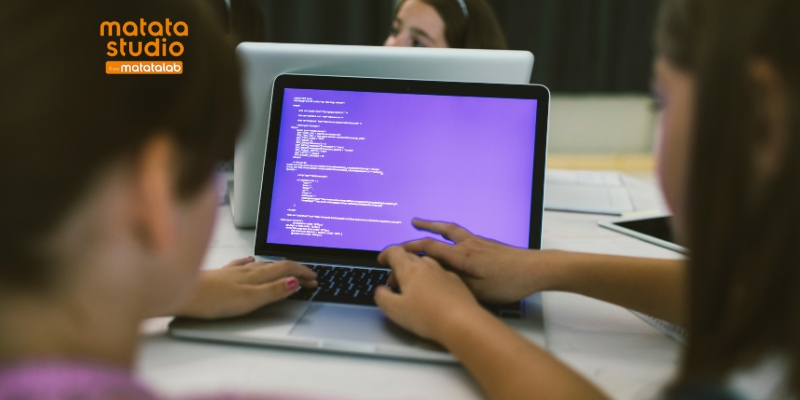Visual coding has revolutionized how beginners learn to program, making it more accessible and engaging than ever before. Whether you’re using Scratch, Blockly, or other platforms, here are valuable tips to enhance your experience with visual coding for students.
Start with a Clear Goal
Before diving into your visual coding project, establish a clear objective. Whether you’re creating a game, animation, or interactive story, having a defined goal helps you stay focused and organized. Sketch your ideas on paper first, breaking down the project into smaller, manageable components. This planning phase will make the actual coding process much smoother and more structured.
Master the Building Blocks
Take time to thoroughly understand each coding block’s function. Visual coding for students is most effective when learners don’t rush through the basics. Experiment with different blocks and observe how they interact. Pay special attention to core concepts like loops, conditionals, and variables, as they form the foundation for more complex projects. Try combining blocks in unexpected ways to discover new possibilities and deepen your understanding.
Use Comments and Labels
Even in visual coding, organization is crucial. Most platforms allow you to add comments or labels to your code blocks. Use these features to document your work and explain what different sections of your code do. This practice not only helps others understand your code but also assists you when you return to a project after some time. Good documentation habits will serve you well if you transition to traditional coding later.
Debug Systematically
When your program doesn’t work as expected, approach debugging methodically. Test one section at a time, use the step-by-step execution feature if available, and observe how your program behaves. Visual coding for students is designed to provide real-time feedback, making it easier to spot errors and understand their causes. Keep track of what you’ve tried, noting what worked and what didn’t—this strengthens your problem-solving skills. With patience and persistence, debugging becomes an essential part of learning and mastering coding.
Embrace Modular Design
Break your projects into smaller, reusable components. In visual coding, this might mean creating custom blocks or sprites that you can use across different projects. This modular approach makes your code more organized and easier to maintain. It also helps you think about programming in terms of discrete, manageable chunks rather than one massive block of code.
Learn from Others’ Projects
Most visual coding platforms have communities where users share their projects. Take advantage of this resource! Study how others have solved similar problems, but don’t just copy their code. Try to understand why they made certain choices and how you might adapt their solutions to your needs. This exposure to different coding styles and solutions will broaden your programming perspective, especially with respect to visual coding for students.
Practice Version Control
Even though visual coding platforms might not have traditional version control systems, develop habits to track your progress. Save different versions of your project as you make significant changes. This allows you to revert to previous versions if needed and helps you understand how your project evolved. Some platforms allow you to “remix” projects – use this feature to experiment with different approaches without risking your main project.
Focus on User Experience
Consider how others will interact with your program. Ensure your instructions are clear, the interface is intuitive, and the program responds appropriately to user input. Visual coding for students encourages a user-centered approach, helping young coders create engaging and functional projects. Test your work with friends or family and gather feedback to refine your design. By focusing on usability and responsiveness, you’ll develop more polished, professional, and enjoyable coding projects.
Bridge to Text-Based Programming
As you become comfortable with visual coding, start making connections to traditional programming concepts. Many visual coding platforms show the text-based equivalent of their blocks. Take time to understand these connections. This knowledge will be invaluable if you decide to transition to text-based programming languages in the future.
Document Your Learning Journey
Keep a log of your projects, challenges, and solutions. Note what worked well and what didn’t. This documentation helps track your progress and serves as a valuable reference for future projects. Share your experiences with the community – teaching others is an excellent way to reinforce your own understanding.
Visual Coding for Students with VinciBot
VinciBot, powered by MatataStudio platform, offers an engaging visual programming experience for children aged 8+. Unlike traditional text-based coding, visual programming uses a graphical interface with drag-and-drop blocks, making it intuitive and fun. This approach helps students grasp key concepts like sequences, loops, and variables, while also exploring AI and IoT applications. VinciBot stands out with its multi-functionality, expandability, and high-quality design, making it ideal for STEAM education, coding competitions, and creative projects. With VinciBot, children learn by doing, fostering computational and engineering thinking for the digital age.
Remember that visual coding is not just a stepping stone to “real” programming – it’s a valuable tool in its own right. Many professional developers use visual tools for prototyping and specific applications. By following these tips and maintaining good coding practices, you’ll build a strong foundation for your programming journey, regardless of which direction it takes you.






Recent Comments